Storing lithium-ion batteries properly is crucial for both safety and longevity. Whether you’re dealing with small แบตเตอรี่ 18650 หรือกำหนดเองขนาดใหญ่กว่า แบตเตอรี่ลิเธียมไอออนแนวทางการจัดเก็บที่ถูกต้องสามารถยืดอายุแบตเตอรี่ได้อย่างมากและป้องกันอันตรายได้ ในฐานะผู้นำในอุตสาหกรรมแบตเตอรี่แบบกำหนดเอง แบตเตอรี่เวด is committed to educating users on safe battery management. In this guide, we’ll explore how to prepare your lithium batteries for storage, select an ideal environment, and choose the right physical location – helping you keep your batteries safe and performing at their best.
การเตรียมแบตเตอรี่ลิเธียมของคุณสำหรับการจัดเก็บ
Before placing a lithium battery into long-term storage, it’s important to get it into optimal condition. Proper preparation involves adjusting the battery’s charge level and handling the battery carefully when removing it from devices or battery-powered equipment. Taking these steps ensures the battery will remain stable and healthy during the storage period.
การปฏิบัติในการชาร์จที่ถูกต้อง
ควรเก็บแบตเตอรี่ลิเธียมไว้ในสถานะการชาร์จปานกลาง ไม่ใช่ชาร์จเต็มหรือหมด Industry experts recommend charging lithium-ion batteries to around 40–60% capacity before storage, as this level minimizes stress on the battery’s cells. Storing a battery fully charged can accelerate capacity loss over time, while storing it completely discharged may risk the battery falling into a deep discharge state from which it might not recover. To implement this, charge or discharge your device’s battery to roughly half its capacity before putting it away. In fact, Vade Battery จัดส่งผลิตภัณฑ์จำนวนมากด้วยค่าใช้จ่ายประมาณ 30%ระดับที่สอดคล้องกับข้อบังคับความปลอดภัยในการขนส่ง และเหมาะสำหรับการจัดเก็บ ดังนั้น ลูกค้าจึงสามารถจัดเก็บได้อย่างมั่นใจก่อนใช้งานครั้งแรก
While adjusting the charge, always use the manufacturer’s recommended charger and follow proper charging procedures. Avoid overcharging in an attempt to “store with full power,” because lithium-ion chemistries do not benefit from a full charge during inactivity. Vade Battery’s custom lithium-ion packs feature built-in battery management systems (BMS) that prevent overcharging, but it’s still best practice to disconnect the charger once the battery reaches the optimal storage level.
If you plan to store the battery for more than a few months, check its charge level periodically (every three to six months) and top it up back to the 40–60% range if needed. This simple maintenance step prevents the battery from slipping into an over-discharged state due to self-discharge during long storage.
การถอดและการจัดการแบตเตอรี่
Proper handling is just as important as the charge level when preparing a battery for storage. If the lithium battery is inside a device that won’t be used for a while, remove the battery from the device if possible. Many electronics slowly drain the battery even when turned off, so removing it prevents any gradual discharge. For example, detach the แบตเตอรี่ลิเธียมไอออน from a cordless drill or other power tool before storage. If the battery isn’t user-removable (like in a sealed smartphone or tablet), then power down the entire device completely before storing it.
Make sure to power off devices and disconnect any chargers before removing the battery, and let the battery cool if it was recently in use or charging. Avoid using sharp tools or excessive force to pry out a battery (and never pull on its wires); if it’s difficult to remove, consult the device’s manual for guidance. แบตเตอรี่เวด คำนึงถึงความสามารถในการให้บริการโดยสร้างแพ็คต่างๆ มากมายที่มีขั้วต่อที่ใช้งานง่าย แต่ไม่ว่าในกรณีใดๆ ก็ตาม ควรจัดการแบตเตอรี่ทั้งหมดด้วยความระมัดระวังเพื่อหลีกเลี่ยงการงอขั้วหรือการทำลายฉนวน
Inspect the battery’s condition during handling. If you notice any swelling, cracks, leakage, or an odd odor, อย่าเก็บแบตเตอรี่นั้นไว้ – a damaged lithium battery can be a safety hazard and should be properly disposed of or recycled. For healthy batteries, make sure their contacts can’t accidentally touch metal objects in storage. A common best practice is to cover exposed terminals with electrical tape or use protective caps (especially for loose cells) to prevent accidental short-circuits.
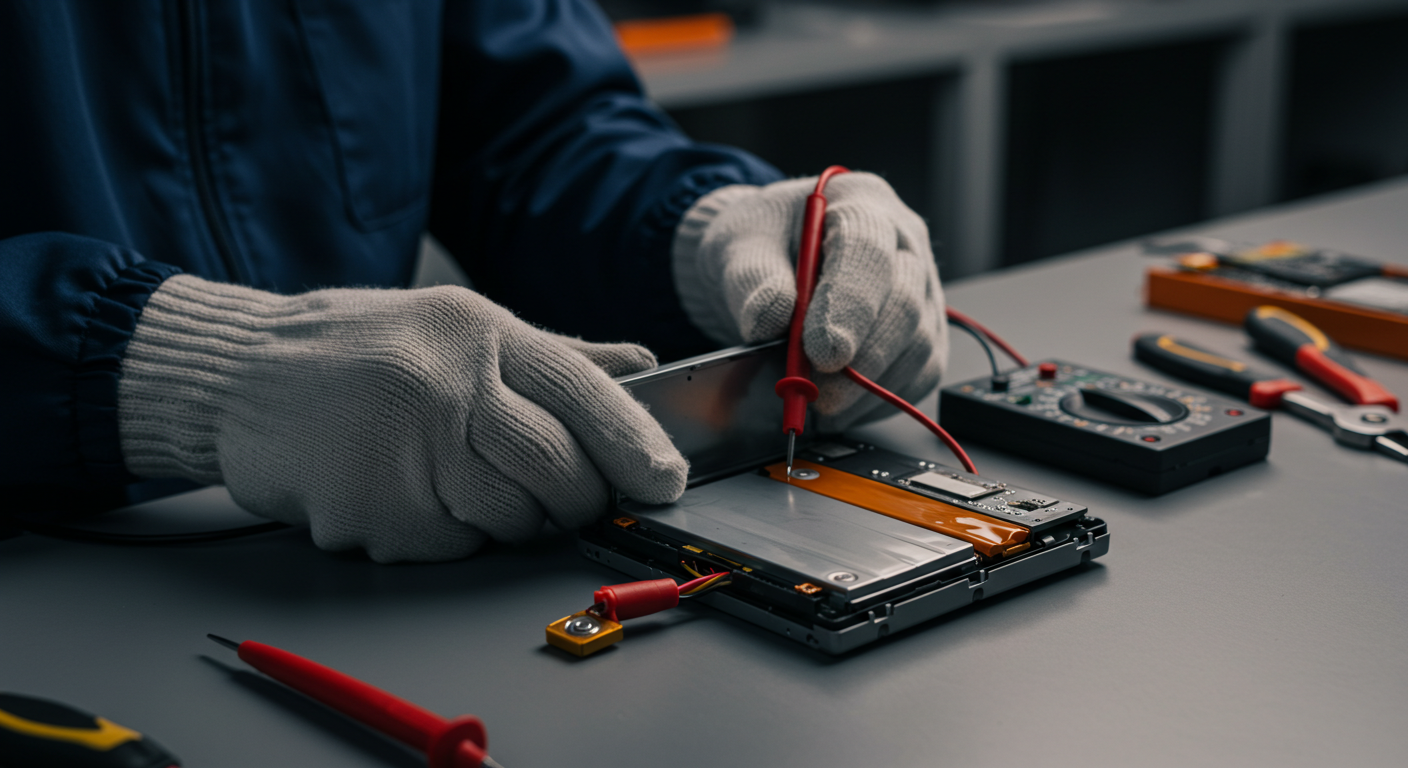
การเลือกสภาพแวดล้อมการจัดเก็บข้อมูลที่เหมาะสม
Lithium-ion and lithium-polymer batteries are very sensitive to their surroundings, so where and how you store them makes a big difference. Factors like temperature, light, humidity, and ventilation can all affect a battery’s health over time. By controlling these conditions in the storage area, you protect the battery’s chemistry and avoid unintended damage while it’s not in use.
การควบคุมอุณหภูมิ
Lithium batteries perform best when stored at a moderate, stable temperature. Avoid exposing batteries to extreme heat or extreme cold during storage. High heat can accelerate chemical aging and even lead to battery damage (for instance, never leave them next to a heater or in a sweltering car), while freezing temperatures can cause irreversible harm to most lithium-ion cells. Ideally, keep batteries around normal room temperature – roughly 15°C to 25°C (59°F to 77°F) is a commonly recommended range for long-term storage.
ในทางปฏิบัติ ควรเก็บแบตเตอรี่ไว้ในพื้นที่ในร่มที่มีการควบคุมอุณหภูมิ แทนที่จะเก็บในสถานที่ที่มีอุณหภูมิร้อนจัด เช่น ห้องใต้หลังคาหรือโรงรถ ในสภาพอากาศที่ร้อนจัด ให้ใช้บริเวณที่เย็นที่สุดในบ้าน (เช่น ตู้เสื้อผ้าที่มีร่มหรือห้องใต้ดิน) และในสภาพอากาศที่หนาวจัด หลีกเลี่ยงการทิ้งแบตเตอรี่ไว้ในที่ที่อาจเกิดน้ำแข็งได้ (เช่น โรงเก็บของที่ไม่มีเครื่องทำความร้อน)
การเปิดรับแสง
Direct sunlight can be harmful to stored lithium batteries because it heats them up and exposes them to UV radiation. Over time, excessive UV light can degrade the plastics and materials in a battery’s casing or protective sleeve. It’s best to keep batteries in a shaded, cool spot (for instance, inside a cabinet or drawer rather than on a sunlit windowsill). Normal indoor room lighting is fine – the main concern is to avoid prolonged direct sun on the batteries. Vade Battery’s pack enclosures are made of durable materials, but we still recommend minimizing UV and heat exposure during storage to preserve the battery’s integrity.
การจัดการความชื้น
Store lithium batteries in a dry environment. Excess humidity can corrode the battery’s connections and may cause moisture to seep into sensitive components. Therefore, avoid damp basements or placing batteries near any source of water. If you live in a very humid climate (for example, tropical areas), consider using an airtight container with a desiccant pack (silica gel) to keep moisture at bay around the batteries. Very dry conditions are generally not a problem and can even help prevent corrosion, but still aim for a moderate humidity level below about 50%. Vade Battery ทดสอบชุดแบตเตอรี่อย่างละเอียดถี่ถ้วนในสภาวะอุณหภูมิและความชื้นที่รุนแรงแต่การควบคุมความชื้นระหว่างการจัดเก็บจะช่วยป้องกันไม่ให้เกิดการเสื่อมสภาพอย่างค่อยเป็นค่อยไปในระยะยาว
การไหลเวียนของอากาศและการระบายอากาศ
Storing lithium batteries in a well-ventilated area is important for safety. You don’t want to seal batteries in an airtight container, especially not a large number of them together, because if a battery were ever to overheat or release gas, that pressure needs to escape. Keeping them on an open shelf or in a box with some ventilation holes allows any heat or gas to dissipate instead of building up.
Also, don’t bury stored batteries under clutter or materials that trap heat. It’s better to place them on a shelf with some space around them than packed tightly in a drawer with no airflow. For a handful of batteries at home, a normal room with a bit of air circulation is usually sufficient as long as you avoid enclosing them completely. With proper temperature, light, humidity, and airflow accounted for, your storage environment will significantly reduce risks and help preserve battery performance.
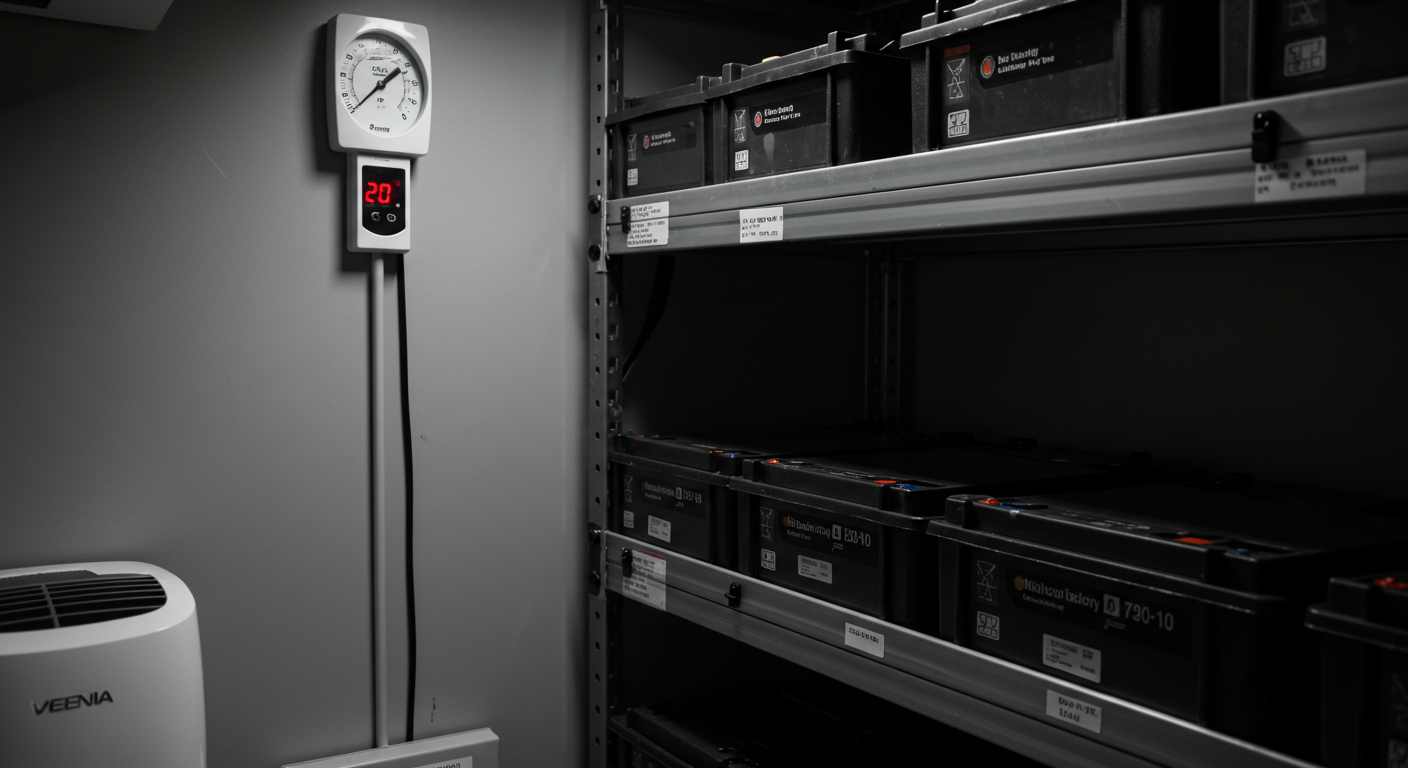
การเลือกสถานที่ทางกายภาพที่เหมาะสม
Even with an ideal climate-controlled environment, the specific physical placement of your batteries is a key safety consideration. “Physical location” means the exact spot and manner in which the batteries are stored — whether on a particular shelf, inside a box, or in a dedicated storage cabinet. Choosing the right location involves thinking about security, stability, and keeping batteries isolated from potential hazards or accidental damage.
กฎพื้นฐานประการหนึ่งคือต้องเก็บแบตเตอรี่ลิเธียมให้ห่างจากมือเด็ก สัตว์เลี้ยง หรือผู้ที่อาจเข้าไปยุ่งเกี่ยวกับแบตเตอรี่ เลือกสถานที่จัดเก็บที่ปลอดภัย เช่น ชั้นวางของในตู้เสื้อผ้าที่สูง หรือตู้ที่มีกุญแจล็อก หากจำเป็น แบตเตอรี่ลิเธียม โดยเฉพาะแบตเตอรี่ขนาดเล็ก เช่น เซลล์ 18650 แบบแยกชิ้น หรือแบตเตอรี่โทรศัพท์ อาจเป็นอันตรายได้หากใช้งานไม่ถูกวิธีหรือเกิดไฟฟ้าลัดวงจร การเก็บรักษาแบตเตอรี่ลิเธียมไว้ในที่ที่เฉพาะผู้ได้รับอนุญาตหรือผู้มีความรู้เท่านั้นจึงจะเข้าถึงได้นั้นมีความสำคัญพอๆ กับการควบคุมสภาพอากาศรอบๆ ตัวแบตเตอรี่
Ensure the storage spot is stable and won’t subject batteries to physical damage. Don’t leave batteries loose on a surface where they might roll off a table or be crushed under other objects. Store them on a flat, secure area where they won’t be knocked around or exposed to constant vibrations. If you’re keeping a heavy battery pack (like a large 48V แบตเตอรี่ LiFePO4) วางไว้บนพื้นแข็งหรือชั้นวางที่แข็งแรงซึ่งรองรับน้ำหนักได้ และต้องแน่ใจว่าจะไม่ล้มคว่ำ
สำหรับแบตเตอรี่ขนาดเล็กหรือเซลล์แต่ละเซลล์ ควรพิจารณาใช้บรรจุภัณฑ์เดิมหรือกล่องเก็บแบตเตอรี่ทนไฟโดยเฉพาะเพื่อการปกป้องเพิ่มเติม แบตเตอรี่ลิเธียมโพลิเมอร์ (LiPo)มักใช้ในงานอดิเรก RC มักจะเก็บไว้ในถุง LiPo พิเศษเพื่อความปลอดภัยหรือกล่องกระสุนโลหะเพื่อป้องกันไฟไหม้ ไม่ว่าในกรณีใด ให้ใช้ภาชนะหรือแผ่นกั้นที่ไม่นำไฟฟ้า เพื่อป้องกันไม่ให้ขั้วแบตเตอรี่สัมผัสกันโดยไม่ได้ตั้งใจและทำให้เกิดไฟฟ้าลัดวงจรระหว่างการจัดเก็บ
Keep lithium batteries away from anything flammable (for example, papers, fabrics, or combustible chemicals). While a properly stored lithium battery is very unlikely to ignite spontaneously, it’s best to eliminate anything around it that could fuel a fire just in case. Storing batteries inside a metal container, a fireproof bag, or even a ceramic jar provides an extra layer of safety and isolation from combustibles. If you have many batteries, use a dedicated cabinet or box for them, kept away from flammable items.
Store batteries in a place that isn’t completely hidden from view (it helps if there’s a smoke detector nearby). Also, keep a fire extinguisher (ideally one rated for lithium fires) or a bucket of sand accessible as a precaution. Vade Battery’s custom packs include multiple safety features (เช่น ช่องระบายความดันและฟิวส์เทอร์มอล) ซึ่งช่วยลดโอกาสเกิดไฟไหม้ได้อย่างมาก อย่างไรก็ตาม การเตรียมพร้อมรับมือกับเหตุการณ์เลวร้ายที่อาจเกิดขึ้นได้ก็ถือเป็นส่วนหนึ่งของการเป็นเจ้าของแบตเตอรี่อย่างมีความรับผิดชอบ
Choosing the right physical location for your lithium batteries ties together all the advice we’ve covered. Pick a cool, dry, ventilated area that’s secure, stable, and away from hazards, and dedicate that space for battery storage. Whether it’s a section of your climate-controlled garage with a metal cabinet or a closet shelf in your office, establishing เงื่อนไขที่ปลอดภัยและเชื่อถือได้ แบตเตอรี่ของคุณจะใช้งานได้ตลอดช่วงเวลาที่ไม่ได้ใช้งาน และยังช่วยปกป้องทรัพย์สินของคุณอีกด้วย นอกจากนี้ยังช่วยให้มั่นใจได้ว่าแบตเตอรี่ของคุณจะอยู่ในสภาพดีเยี่ยมโดยสูญเสียความจุเพียงเล็กน้อยเมื่อคุณต้องใช้งานอีกครั้ง
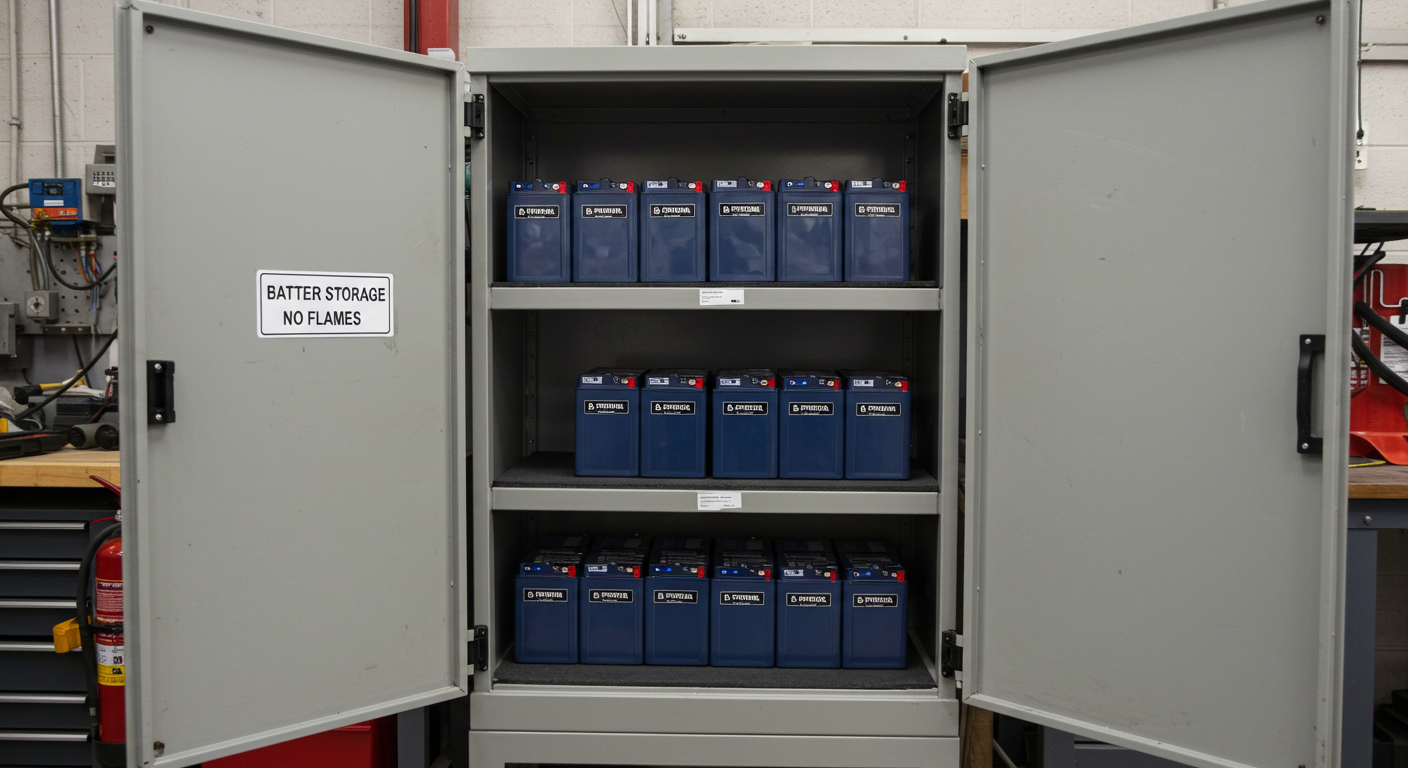
การป้องกันไฟฟ้าลัดวงจรและความเสียหาย
การจัดเก็บแบตเตอรี่ลิเธียมอย่างปลอดภัยไม่เพียงแต่ต้องมีสภาพแวดล้อมที่เหมาะสมเท่านั้น แต่ยังต้องมีการจัดการอย่างระมัดระวังเพื่อหลีกเลี่ยงความเสียหายทางกายภาพหรือการสัมผัสทางไฟฟ้าที่ไม่ได้ตั้งใจ แม้จะอยู่ในสภาวะที่ควบคุมได้ดี แบตเตอรี่ก็อาจกลายเป็นอันตรายได้หากขั้วของแบตเตอรี่สัมผัสกับวัสดุที่เป็นสื่อไฟฟ้า หรือหากโครงสร้างเซลล์ภายในได้รับความเสียหายจากการใช้งานที่ไม่เหมาะสม การแยกขั้วแบตเตอรี่และจัดระเบียบแบตเตอรี่ของคุณอย่างเหมาะสมจะช่วยลดความเสี่ยงเหล่านี้และทำให้มั่นใจได้ว่าแบตเตอรี่ที่จัดเก็บของคุณยังคงอยู่ในสภาพที่ดีที่สุด
การแยกขั้วแบตเตอรี่
วิธีที่มีประสิทธิภาพที่สุดวิธีหนึ่งในการป้องกันไฟฟ้าลัดวงจรคือการป้องกันไม่ให้ขั้วแบตเตอรี่สัมผัสกันหรือสัมผัสกับพื้นผิวที่เป็นสื่อไฟฟ้า ซึ่งถือเป็นเรื่องสำคัญโดยเฉพาะอย่างยิ่งสำหรับ เซลล์ทรงกระบอกหลวมเช่น แบตเตอรี่ลิเธียมไอออน 18650 และ 21700 ซึ่งมีขั้วบวกและขั้วลบที่เข้าถึงได้ง่ายทั้งสองด้าน ไฟฟ้าลัดวงจรอาจเกิดขึ้นได้ภายในไม่กี่วินาทีหากขั้วที่โผล่ออกมาสัมผัสกับวัตถุโลหะโดยไม่ได้ตั้งใจ ซึ่งบางครั้งอาจนำไปสู่ความร้อนสูงเกินไปอย่างรวดเร็วหรือเซลล์ล้มเหลว
To avoid this, cover each battery’s terminals with non-conductive tape or use purpose-made terminal covers. For multi-cell battery packs, ensure the output connectors are either capped or stored in a way that no metal can reach the pins. แบตเตอรี่เวด ออกแบบชุดแบตเตอรี่แบบกำหนดเองจำนวนมากที่มีตัวเรือนป้องกันในตัวที่ป้องกันจุดต่อสาย แต่ผู้ใช้ยังคงมีบทบาทในการป้องกันชุดแบตเตอรี่โดยเก็บให้ห่างจากวัตถุโลหะที่หลงเหลือ เช่น กุญแจ เครื่องมือ หรือสกรูที่คลายออก เมื่อจัดเก็บแบตเตอรี่หลายก้อนในภาชนะเดียว ให้ใช้แผ่นกั้นหรือแผ่นโฟมเพื่อสร้างช่องแยกแต่ละช่องเพื่อไม่ให้เสียดสีกัน
จัดการแบตเตอรี่ด้วยความระมัดระวังเมื่อจัดเก็บ อย่าโยนหรือทำตกบนชั้นวาง เนื่องจากแรงกระแทกอาจทำให้ชิ้นส่วนภายในเสียหายหรือวงจรป้องกันหลุดออกได้ หากคุณสังเกตเห็นรอยตำหนิทางกายภาพบนปลอกหุ้มแบตเตอรี่หรือหากฉนวนรอบขั้วแบตเตอรี่แตกร้าว อย่าเก็บแบตเตอรี่นั้นจนกว่าจะได้รับการประเมินหรือเปลี่ยนใหม่อย่างเหมาะสม เปลือกภายนอกที่ยังคงสภาพดีเป็นอุปสรรคสำคัญต่อไฟฟ้าลัดวงจรและความชื้น ดังนั้น หากมีสัญญาณของความเสียหายหรือการบิดงอใดๆ แสดงว่าต้องใช้ความระมัดระวัง
การจัดระเบียบแบตเตอรี่ตามประเภทและอายุ
นอกจากการแยกขั้วแล้ว การแบ่งประเภทแบตเตอรี่ด้วยถือเป็นแนวทางปฏิบัติที่ดี พิมพ์ (เช่น Li-ion, LiFePO4 หรือ LiPo) และโดย วันที่ผลิตหรือระยะเวลาการใช้งานวิธีนี้ช่วยให้คุณติดตามได้ว่าแบตเตอรี่ก้อนใดใช้งานมายาวนานที่สุด รวมถึงเซลล์ใดที่อาจมีแรงดันไฟหรือความจุที่แตกต่างกันเล็กน้อย การจัดกลุ่มแบตเตอรี่เหล่านี้ในกล่องที่มีฉลากหรือบนชั้นวางที่มีฉลากยังช่วยลดความยุ่งยากในการตรวจสอบเป็นระยะๆ และทำให้มั่นใจได้ว่าแบตเตอรี่เก่า (ที่มีความจุลดลง) สามารถทดสอบหรือรีไซเคิลได้ก่อน
การจัดระเบียบตามเคมีมีความสำคัญเนื่องจากเคมีลิเธียมแต่ละชนิดอาจมีแรงดันไฟในการจัดเก็บที่เหมาะสมหรือข้อกำหนดด้านความปลอดภัยที่แตกต่างกัน ตัวอย่างเช่น แบตเตอรี่ LiFePO4 มักจะมีแรงดันไฟที่กำหนดแตกต่างกันเล็กน้อยจากชุดแบตเตอรี่ลิเธียมไออนมาตรฐาน ดังนั้นการผสมแบตเตอรี่ทั้งสองชนิดเข้าด้วยกันอาจทำให้เกิดความสับสนเมื่อถึงเวลาทดสอบหรือชาร์จใหม่ การใช้ฉลากที่ชัดเจนยังช่วยป้องกันการจับคู่แบตเตอรี่เก่าที่เสื่อมสภาพบางส่วนกับแบตเตอรี่รุ่นใหม่โดยไม่ได้ตั้งใจในแอปพลิเคชันที่สำคัญอีกด้วย
การแบ่งประเภทแบตเตอรี่ยังช่วยให้คุณสังเกตเห็นรูปแบบต่างๆ ในสุขภาพแบตเตอรี่ได้อีกด้วย หากแบตเตอรี่ชุดใดชุดหนึ่งเริ่มบวมหรือทดสอบแรงดันไฟไม่ผ่าน คุณสามารถแยกแบตเตอรี่ชุดนั้นออกได้อย่างรวดเร็ว แบตเตอรี่เวด มักแนะนำให้ลูกค้าเชิงพาณิชย์จัดทำสมุดบันทึกหรือบันทึกดิจิทัลเกี่ยวกับการใช้งานแบตเตอรี่และระยะเวลาการจัดเก็บ โดยเฉพาะสำหรับอุปกรณ์จำนวนมาก การจดบันทึกวันที่ติดตั้งและถอดออกจะช่วยให้คุณคาดการณ์ได้ว่าแบตเตอรี่จะใกล้หมดอายุการใช้งานที่ปลอดภัยเมื่อใด และวางแผนเปลี่ยนแบตเตอรี่ได้ตามความเหมาะสม
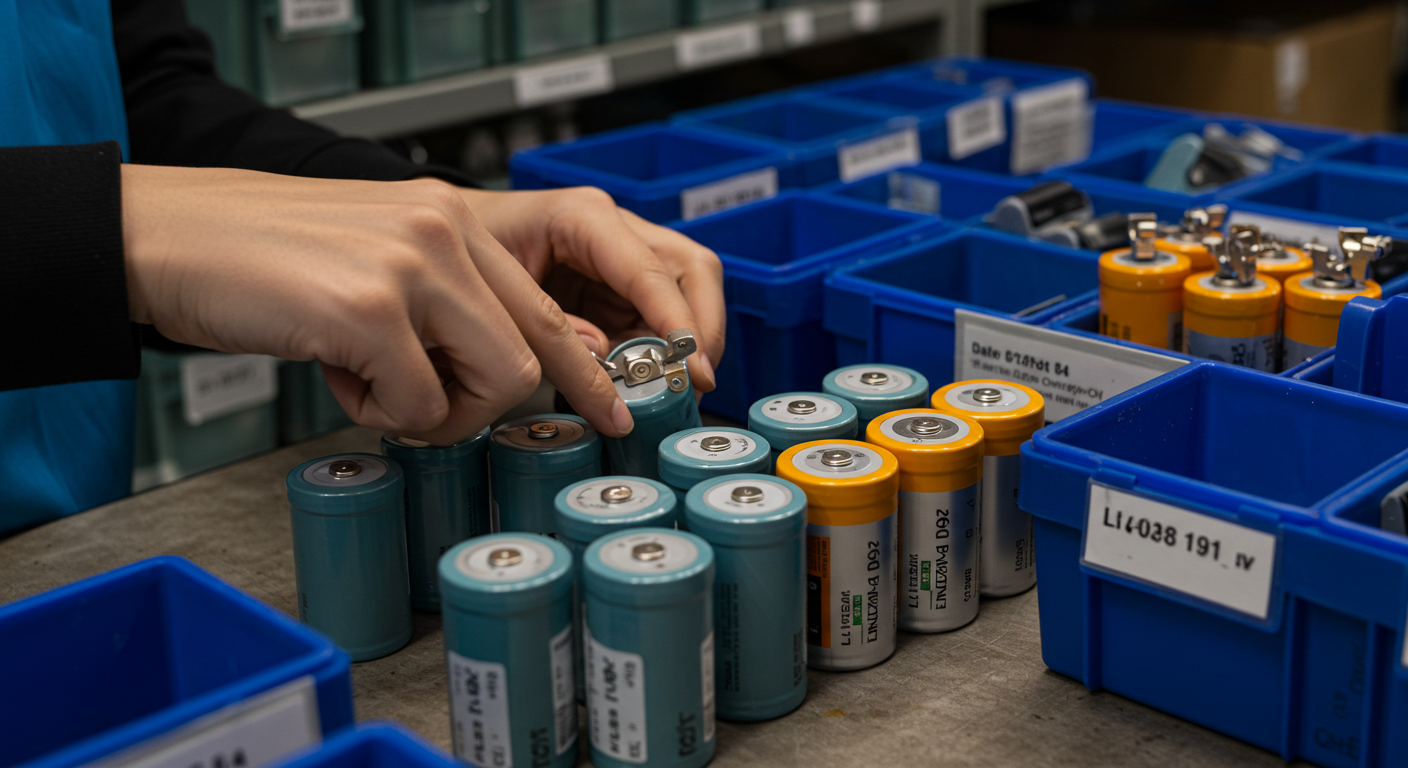
การบำรุงรักษาและการติดตาม
Even when lithium batteries are stored under the best conditions, it’s essential to keep an eye on them over time. Variations in temperature, humidity, or a battery’s internal chemistry can gradually degrade performance if left unmonitored. By maintaining proper climate control and inspecting batteries regularly, you can detect early warning signs of damage or capacity loss and take corrective action before a minor issue escalates into a safety risk.
การรักษาสภาพอากาศให้พอประมาณและแห้ง
Regularly checking temperature and humidity in your battery storage area helps you catch environmental changes. A battery that was stored under optimal conditions might experience unexpected heat if a heater or appliance is added to the room. In the same way, a humid season or a hidden water leak can quickly raise moisture levels, encouraging corrosion or other deterioration within the battery’s casing. Using a simple thermometer-hygrometer combo is an inexpensive way to track these factors. If temperatures creep outside the 15°C–25°C range, use cooling or heating solutions to bring it back into a safe window.
เครื่องลดความชื้น ชุดดูดความชื้น หรือแม้แต่ระบบควบคุมสภาพอากาศเฉพาะทางอาจจำเป็นในสภาพแวดล้อมที่รุนแรง แบตเตอรี่เวด แนะนำให้เก็บแบตเตอรี่ไว้ในความชื้นปานกลางเพื่อลดความเสี่ยงของการควบแน่น ตัวอย่างเช่น หากคุณวางแผนจะเก็บแบตเตอรี่ที่มีมูลค่าสูง (เช่น แบตเตอรี่ที่ใช้ในอุปกรณ์อุตสาหกรรมหรือทางการแพทย์) ในระยะยาว ควรพิจารณาปิดผนึกแบตเตอรี่ในกล่องป้องกัน การรักษาสภาพแวดล้อมให้เสถียรไม่เพียงแต่ป้องกันการกัดกร่อนเท่านั้น แต่ยังช่วยให้มั่นใจได้ว่าปฏิกิริยาเคมีภายในแบตเตอรี่จะยังคงอยู่ในระดับต่ำและจัดการได้
การตรวจสอบและทดสอบตามระยะเวลา
การตรวจสอบแบตเตอรี่ที่เก็บไว้ก็มีความสำคัญไม่แพ้กัน ทุกๆ สองสามเดือน ให้ตรวจสอบความเสียหายทางกายภาพ การบวม หรือการรั่วไหลใดๆ แบตเตอรี่ที่แสดงสัญญาณของการโป่งพองหรือมีกลิ่นผิดปกติควรถอดออกและจัดการตามแนวทางการกำจัดหรือรีไซเคิลในท้องถิ่น ขั้นตอนนี้มีความสำคัญอย่างยิ่งสำหรับแบตเตอรี่รุ่นเก่า เนื่องจากมีแนวโน้มที่จะพังภายในมากกว่ารุ่นใหม่
Where possible, test the battery’s voltage or capacity using a multimeter or specialized battery analyzer. If a particular battery has fallen significantly below its nominal voltage, it may have self-discharged to a point where recharging could be unsafe or unlikely to succeed. Some batteries also contain built-in diagnostic features or ชิปตรวจสอบอัจฉริยะ that track cycles and internal temperature. In such cases, regularly reviewing this data can give insights into the battery’s health over time. When significant capacity loss is detected, it’s a better choice to recycle and replace that battery rather than risk potential instability in future usage.
การตรวจสอบเป็นประจำช่วยให้การจัดเก็บแบตเตอรี่ของคุณเป็นระเบียบและปลอดภัย ลดความประหลาดใจให้เหลือน้อยที่สุด ไม่ว่าคุณจะมีแบตเตอรี่เพียงไม่กี่ก้อนที่บ้านหรือมีสินค้าคงคลังในโรงงานจำนวนมาก การตรวจสอบอย่างสม่ำเสมอจะช่วยให้คุณระบุเซลล์ที่มีปัญหาได้ในระยะเริ่มต้นและรักษาความน่าเชื่อถือโดยรวมได้ แนวทางนี้ยังรองรับการปฏิบัติตามข้อบังคับในภาคส่วนต่างๆ ที่มีการตรวจสอบความปลอดภัยของการจัดเก็บแบตเตอรี่อย่างเคร่งครัดอีกด้วย แบตเตอรี่เวด ส่งเสริมการทดสอบเป็นระยะๆ ไม่เพียงเพื่อความปลอดภัยเท่านั้น แต่ยังเพื่อให้แน่ใจว่าแบตเตอรี่ของคุณคงความจุที่ใช้งานได้สูงสุดไว้เมื่อคุณต้องการจริงๆ
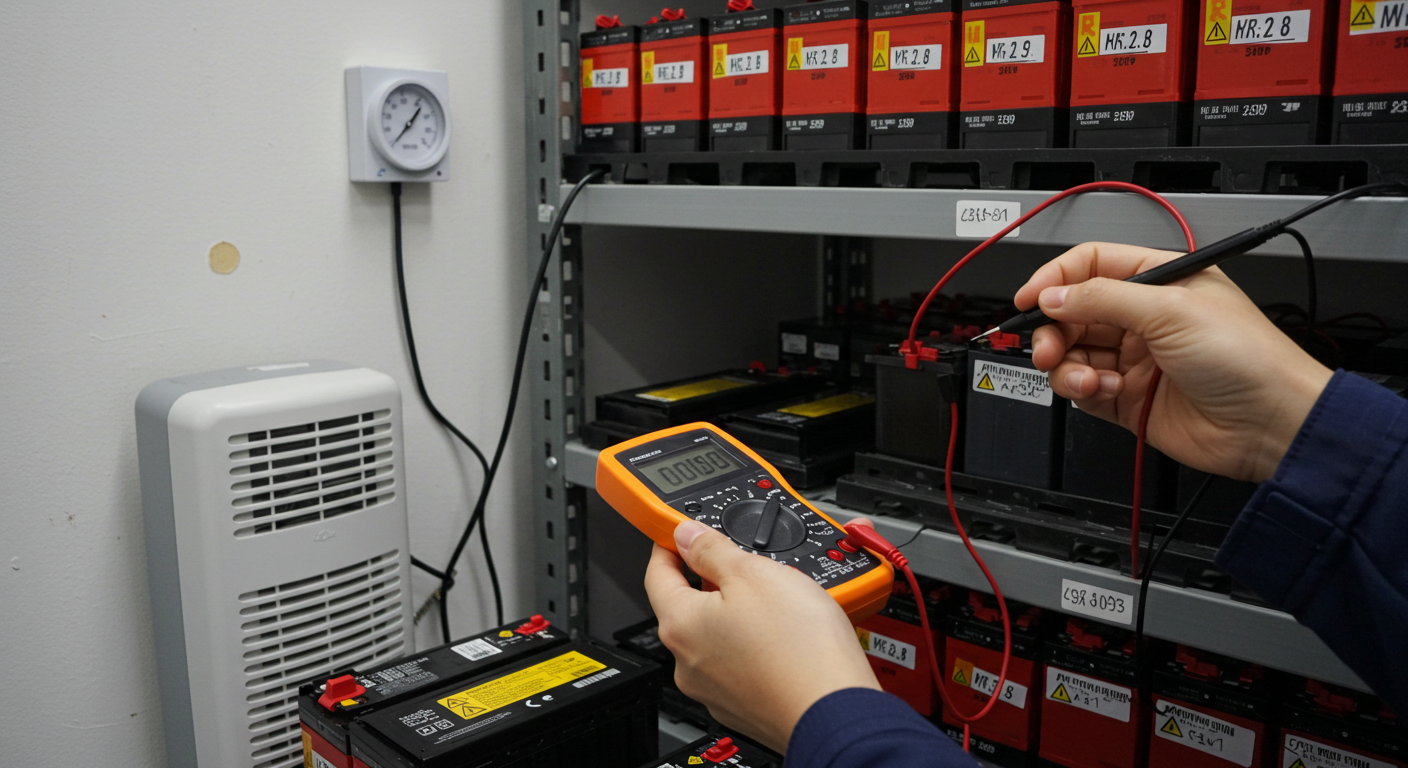
โซลูชันการจัดเก็บข้อมูลขั้นสูง
ในการใช้งานที่ต้องเก็บแบตเตอรี่ลิเธียมในปริมาณมากหรือต้องมีมาตรการความปลอดภัยที่เข้มงวดเป็นพิเศษ อาจจำเป็นต้องใช้โซลูชันเพิ่มเติมนอกเหนือจากชั้นวางธรรมดาหรือภาชนะพื้นฐาน ตู้เก็บของแบตเตอรี่ที่สร้างขึ้นโดยเฉพาะและระบบตรวจสอบอัจฉริยะเป็นแนวทางสองแนวทางที่สามารถเพิ่มความปลอดภัยและการดูแลได้อย่างมาก วิธีการขั้นสูงเหล่านี้มีประโยชน์อย่างยิ่งในสภาพแวดล้อมเชิงพาณิชย์ อุตสาหกรรม หรือห้องปฏิบัติการที่การจัดการแบตเตอรี่เป็นส่วนสำคัญของการดำเนินงานประจำวัน
ตู้เก็บของแบตเตอรี่
ตู้เก็บของแบตเตอรี่เป็นตู้เก็บแบตเตอรี่ลิเธียมแบบเฉพาะและทนไฟ โดยทั่วไปตู้เหล่านี้มักทำจากวัสดุที่ไม่ติดไฟ ซึ่งอาจกักเก็บความร้อนหรือเปลวไฟได้หากแบตเตอรี่เกิดความร้อนสูงเกินไป ตู้เหล่านี้มีคุณสมบัติ เช่น ประตูที่ปิดเองได้และมีช่องระบายอากาศในตัว จึงช่วยให้มั่นใจได้ว่าความร้อนหรือก๊าซจะไม่สะสม ซึ่งเป็นสิ่งสำคัญเมื่อต้องจัดเก็บแบตเตอรี่ขนาดใหญ่ไว้ด้วยกัน แม้ว่าเหตุการณ์ด้านความปลอดภัยดังกล่าวจะเกิดขึ้นไม่บ่อยนัก แต่การมีตู้ที่ออกแบบมาเพื่อการจัดเก็บแบตเตอรี่ก็ถือเป็นอีกหนึ่งชั้นของการป้องกันอันตรายที่อาจเกิดขึ้นได้
ประโยชน์ด้านการจัดการยังมาจากการใช้ตู้ที่มีชั้นวางหรือช่องสำหรับแยกแบตเตอรี่ตามขนาดหรือองค์ประกอบทางเคมี ซึ่งจะช่วยลดความเสี่ยงของการสับสนโดยไม่ได้ตั้งใจและไฟฟ้าลัดวงจร ในบางอุตสาหกรรม กฎระเบียบด้านความปลอดภัยหรือกรมธรรม์ประกันภัยแนะนำหรือกำหนดให้ใช้ตู้แบตเตอรี่เฉพาะทางสำหรับการจัดเก็บขนาดใหญ่ แบตเตอรี่เวด can advise on recommended cabinet types depending on the battery’s chemistry and energy capacity, as different lithium chemistries may have slightly different ventilation or thermal requirements. For example, a cabinet used for LiFePO4 packs might differ in design from one storing high-capacity lithium-ion modules.
ระบบตรวจสอบอัจฉริยะ
สำหรับการดูแลขั้นสูงของการจัดเก็บแบตเตอรี่ ระบบการตรวจสอบอัจฉริยะจะรวมเอาเซ็นเซอร์และโมดูลการสื่อสารที่ติดตามข้อมูล เช่น อุณหภูมิ ความชื้น แรงดันไฟฟ้า และกระแสไฟฟ้า แบบเรียลไทม์ ระบบเหล่านี้สามารถแจ้งเตือนพนักงานได้หากแบตเตอรี่เริ่มร้อนเกินไปหรือหากสภาพแวดล้อมไม่อยู่ในระดับที่ยอมรับได้ ในการทำงานขนาดใหญ่ การตรวจสอบดังกล่าวสามารถรวมเข้ากับแดชบอร์ดทั่วทั้งโรงงานได้ ซึ่งจะทำให้มองเห็นตำแหน่งจัดเก็บแบตเตอรี่ได้หลายตำแหน่ง
การแจ้งเตือนจากระบบตรวจสอบอัจฉริยะสามารถกระตุ้นการดำเนินการทันทีเพื่อป้องกันความเสียหาย หากแบตเตอรี่ร้อนเกินไป พนักงานสามารถแยกแบตเตอรี่ออกได้ทันทีหรือปรับการควบคุมสภาพอากาศ หากระดับความชื้นเพิ่มสูงขึ้น เครื่องลดความชื้นสามารถเปิดโดยอัตโนมัติ ระบบสมัยใหม่จำนวนมากยังบันทึกข้อมูลประสิทธิภาพการทำงาน ซึ่งอาจมีประโยชน์อย่างยิ่งสำหรับการวินิจฉัยปัญหาหรือการรับรองการปฏิบัติตามข้อบังคับ นอกจากนี้ คุณสมบัติการเข้าถึงระยะไกลยังช่วยให้ผู้ปฏิบัติงานสามารถตรวจสอบสถานะของแบตเตอรี่ที่จัดเก็บไว้ได้จากทุกที่ ช่วยให้อุ่นใจเมื่อต้องจัดการกับผลิตภัณฑ์ที่ละเอียดอ่อนหรือมีมูลค่าสูง
Combining purpose-built cabinets with automated monitoring creates a comprehensive safety net. For businesses working with critical battery systems — for example, backup power solutions or medical equipment — advanced storage solutions can be a worthwhile investment. แบตเตอรี่เวด สนับสนุนลูกค้าโดยให้คำแนะนำเกี่ยวกับวิธีการนำเทคโนโลยีเหล่านี้ไปใช้ในลักษณะที่คุ้มต้นทุนและเป็นไปตามข้อกำหนด ตลอดจนทำให้แน่ใจว่าการจัดเก็บแบตเตอรี่นั้นทั้งใช้งานได้จริงและปลอดภัย
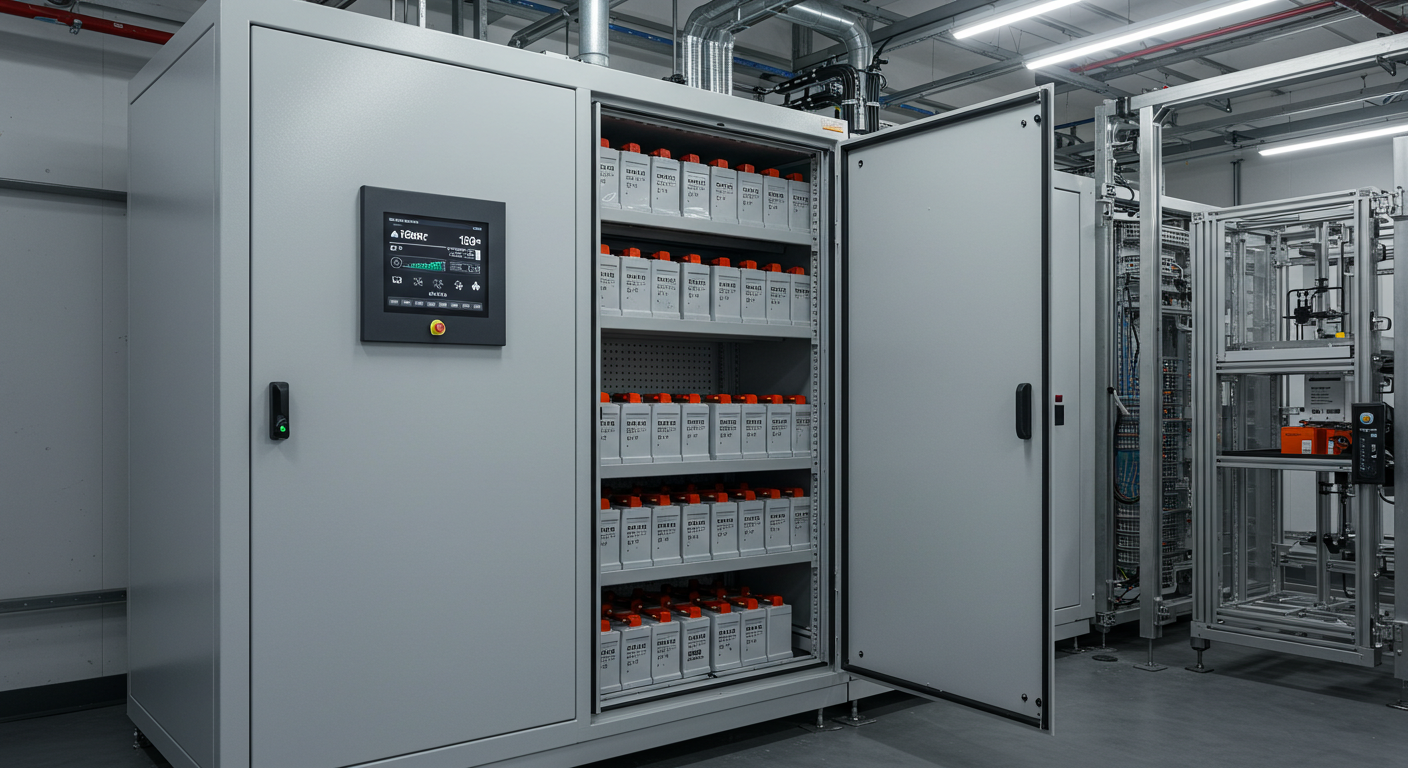
บทสรุป
การจัดเก็บแบตเตอรี่ลิเธียมอย่างปลอดภัยไม่ใช่แค่เพียงการเก็บแบตเตอรี่ไว้บนชั้นวางเท่านั้น charging each battery to an optimal 40–60% level, regulating temperature and humidity, and isolating terminals against short circuits, you help preserve the battery’s capacity and reduce safety risks. Selecting a stable, secure location ensures that the batteries are protected from physical damage and kept away from possible ignition sources.
ปกติ การบำรุงรักษาและการติดตาม mean that any potential issues — such as swelling, over-discharge, or environmental fluctuations — are caught early and addressed proactively. For more demanding applications, advanced storage solutions like fire-rated cabinets and smart monitoring systems can deliver extra layers of protection and efficiency. These strategies reflect Vade Battery’s มุ่งมั่นที่จะส่งมอบโซลูชันพลังงานที่ปลอดภัยและประสิทธิภาพสูงให้กับทั้งธุรกิจและผู้บริโภค
สิ่งสำคัญที่ควรรู้ ได้แก่ การเก็บแบตเตอรี่ลิเธียมไว้ในระดับประจุที่พอเหมาะระหว่างการจัดเก็บ การวางไว้ในพื้นที่เย็นและมีอากาศถ่ายเทได้ดี และตรวจสอบเป็นระยะๆ ว่ามีร่องรอยการสึกหรอหรือความเสียหายหรือไม่ แม้เพียงใส่ใจเพียงเล็กน้อยในตอนนี้ก็ช่วยให้คุณหลีกเลี่ยงปัญหาแบตเตอรี่หมดกะทันหันหรือเลวร้ายกว่านั้นในอนาคตได้ หากคุณมีปัญหาในการจัดเก็บที่ไม่เหมือนใครหรือมีข้อกำหนดขนาดใหญ่ ติดต่อ Vade Battery for expert guidance and custom battery solutions that match your needs. By following the best practices outlined here, you’ll help ensure that your lithium batteries remain safe, reliable, and ready for action whenever you need them.


